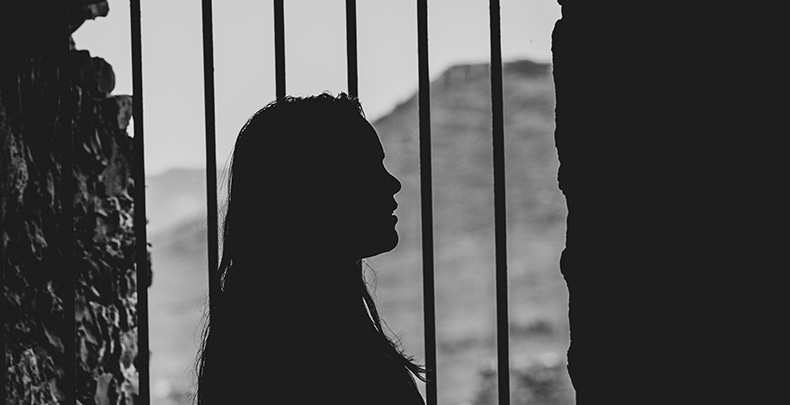STATUS OF FEMALE PRISONERS IN INDIA
ABSTRACT Indian society provides a respectable status to every woman. They play a vital role in society. The Important role that women plays is in the capacity of the mother. The Constitution of India ensures the status of Equality to the women in India in every aspect of life. It also imposes an obligation on the State to secure the rights of each and every woman and to fulfill the requirements of international conventions regarding the rights of the women. But in reality, women in prisons are facing many problems. Even the basic fundamental rights are violated after giving so many judgments by the Supreme Court and High Court. KEY WORDS Prisons, Constitutional Rights, Human Rights, Sexual Harassment, Custodial Torture, and women prisoners. INTRODUCTION Presently Women represent 49% of the country’s population. Several development programmers have been implemented by the Five-Year Plans. In 1985, a separate authority for Women and Child Development was set up. The major programmers include Support to Tanning-cum-Employment Programme (STEP) for women, Mahila Kosh, Women’s Development Corporation, etc. In India, there is also a need for programs for solving the acute problems of women prisoners inside or outside the Prison. CONSTITUTIONAL STATUS OF WOMEN PRISONERS IN INDIA: The Indian Constitution provides the status of equality to women. The Founding Fathers of the Indian Constitution gave serious thought to protect and promote the rights of Women and Children. This is amply reflected in the Preamble which contains the ideals and aspirations of the people of India”. One of the golden ideals is “the equality of status and opportunity”. The Constitution of India under Article 14 provides equal protection of laws to the women in India and Article 15 prohibits discrimination on grounds of intimate relation. But still Indian women prisoners are facing many problems. Article 21 of the Constitution of India ensure various rights for women prisoners. For example; Right to inmates of protective homes; Right to free legal aid; Right to speedy trial Women prisoners have the right to a speedy trial. WOMEN PRISONER’S RIGHT UNDER THE PRISONER’S ACT, 1894: This Act mainly focus on reformation of prisoners in connection with the rights of prisoners, following sections of the Prisoners Act, 1894 describes rights of women prisoners in India: The female prisoners have the right to live separately from the male prisoners. Section 27(1) of the Prisoners Act 1894 provides that in a correctional home male and female prisoners should be kept in different prison and both are prisoners should be restrain themselves form doing any intimate activities. The Prison Act of 1894 allows civil prisoners or those awaiting trial to provide for their own basic needs while in prison. They can buy or receive from outside sources essential items like food, clothing, bedding, and other necessities, but only at designated times and subject to inspection. Additionally, the Inspector General must approve any rules governing this privilege to ensure it is not abused. This provision aims to maintain a basic standard of living for prisoners who have not yet been convicted. The act deals with supply of clothing and bedding to civil and unconvicted criminal prisoners’ section 33(1) of the prison Act, 1894 provides that every civil and unconvicted criminal prisoner unable to provide himself with sufficient clothing and bedding shall be supplied by the Superintendent with such clothing and bedding as may be necessary. Accommodation and sanitary conditions for prisoners Provision for the shelter and safe custody of the excess number of prisoners who cannot be safely kept in any prison. Provision related to the examination of prisoners by qualified Medical Officers. WOMEN PRISONER’S RIGHTS (INTERNATIONAL AND NATIONAL PROVISIONS): Female prisoners should be searched and examined by a female examiner under the supervision of a Medical Officer. Women prisoner’s should be Protection from custodial rape under Sections 376(A), 376(B), 376(C), 376(D) of IPC. They have the Right to separate accommodation from male prisoners (Standard Minimum Rules for the Treatment of Prisoners, Rule 8(a)). They should have the basic human rights: hygienic food, shelter, medical facilities, reading and writing facilities, and dignity in custody. Pregnant women should have the right to medical and personal facilities during delivery, and can be released on bail at the delivery time. Women prisoners should be attended and supervised only by women officers (Standard Minimum Rules, Rule 53). Special accommodation for prenatal and postnatal care, and arrangements for children to be born in a hospital outside the institution (Rule 23). Medical officers should examine every prisoner, including pregnant women, and provide necessary care. Medical officers shall report on prisoners’ physical and mental health and recommend measures for their care. Regular inspection and advice on food, hygiene, sanitation, and prisoners’ health. Right to legal aid and defense by a lawyer of their choice. Women prisoners have the Right to freedom of religion. Examination of arrested persons by a registered medical practitioner in case of torture and maltreatment. Protection and care for pregnant women, including gynecological examination and adequate nutrition. PROBLEM FACED BY WOMEN PRISONERS IN INDIA: Poor living conditions and overcrowding in prisons, leading to health issues and psychological problems. Lack of essential amenities like sanitation facilities, menstrual hygiene products, and clean water. Custodial rape and sexual assault by male law enforcement and prison staff. Disproportionate representation of underrepresented communities like Dalits, Adivasis, and minority groups. Lack of family support and separation from children, affecting mental health and relationships. Inadequate medical care and nutrition, particularly for pregnant women. Limited access to legal aid, education, and vocational training, hindering rehabilitation and reintegration. RELEVANT CASE LAWS: State of Maharashtra v. CK Jain: In this case, there was rape in police custody. Regarding evidence, the Supreme Court emphasized that in such cases unless the testimony of the prosecution was unreliable, corroboration normally should not be insisted upon. Secondly, the presumption is to be made that ordinarily, no woman would make a false allegation of rape. Thirdly, delay in the making of the complaint is not fatal and quite understandable reasons exist for the delay on the part of the victim woman in …


